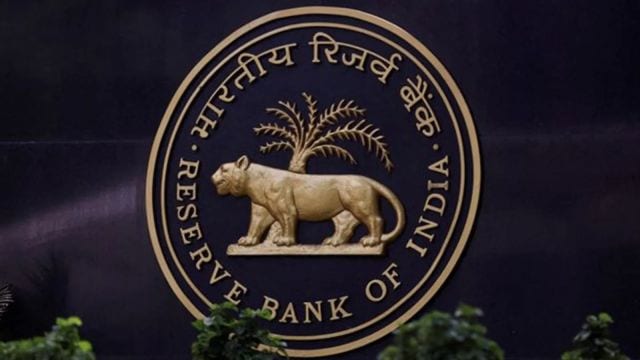RBI’s monetary policy panel may cut repo rate by 25 bps to 6%: Here’s why
The six-member rate-setting panel is meeting amid heightened uncertainty in the global market following the recent announcement of reciprocals tariffs by US President Donald Trump.
 While RBI is unlikely to revise the inflation forecast, its outlook on GDP growth in the wake of US tariff announcements will be closely watched, economists said. (Express archives)
While RBI is unlikely to revise the inflation forecast, its outlook on GDP growth in the wake of US tariff announcements will be closely watched, economists said. (Express archives)The Reserve Bank of India’s (RBI) six-member Monetary Policy Committee (MPC) is likely to cut the repo rate — the key policy rate — by 25 basis points (bps) in its upcoming meeting, scheduled from April 7 to 9. The rate setting panel may also change the monetary policy stance from neutral to accommodative — signaling further reductions in the repo rate.
The six-member rate-setting panel is meeting amid heightened uncertainty in the global market following the recent announcement of reciprocals tariffs by US President Donald Trump. There are fears that higher tariff rates may lead to inflation, increase in trade tensions and a lower growth in the world economy.
While RBI is unlikely to revise the inflation forecast, its outlook on GDP growth in the wake of US tariff announcements will be closely watched, economists said.
What to expect from the upcoming MPC meeting?
The RBI’s MPC is likely to deliver a 25 bps cut in the repo rate for the second consecutive time in the policy which will be announced on April 9. Post this reduction, the repo rate — the rate at which the RBI lends money to banks to meet their short-term funding needs — will stand at 6 per cent from 6.25 per cent. One basis point (bps) is one-hundredth of a percentage point.
“We expect RBI to cut policy rates by 25 bps in April policy,” said Gaura Sen Gupta, chief economist at IDFC First Bank.
“Domestic data has aligned to make way for the Monetary Policy Committee (MPC) to lower rates further, characterised by easing inflation and growth whilst depreciation pressure on the rupee has eased significantly,” said Radhika Rao, executive director and senior economist, DBS Bank.
January-February inflation is tracking an average of 3.9 per cent, below the RBI’s quarterly projection for January-March 2025. The RBI has projected consumer price-based inflation (CPI) at 4.8 per cent for the fourth quarter of FY25.
In the February meeting, the MPC, for the first time in nearly five years, had reduced the repo rate by 25 bps to 6.25 per cent. The decision was taken amid easing inflation and concerns over slowing growth.
Will RBI change policy stance?
Economists are divided over the monetary policy stance. While a majority of economists expect the policy stance to remain ‘neutral’, some believe that the MPC may change it to ‘accommodative’. “The stance is likely to be changed to accommodative, which will signal that the rates are going to be lowered further,” said Madan Sabnavis, chief economist Bank of Baroda.
IDFC First Bank’s Sen Gupta expects the MPC to maintain a neutral stance.
“The policy stance will be a close call given the substantial liquidity infusion already done. We estimate system liquidity will be between 1-2 per cent of NDTL (net demand and time liabilities) in Q1 FY26 so the argument can be made for a change in stance,” she said.
“However, given the volatile global environment, the stance is likely to be retained as neutral,” Sen Gupta said.
The tariffs will likely have an inflationary impact on the US. This could limit the extent of the US Fed rate cut cycle despite clear risks to US growth, she said.
Inflation and growth forecasts
The RBI is unlikely to change its projection on inflation and growth in the upcoming monetary policy, analysts said.
For the current fiscal (FY 2025-26), the RBI has projected real GDP growth of 6.7 per cent and CPI inflation at 4.2 per cent.
“It would be interesting to know if the RBI takes a call on growth now because of the tariff announcements and its impact on our GDP.
Brokerage firm Nomura expects the country’s GDP growth to be at 6 per cent in FY2026 compared to 6.2 per cent in FY2025.
How would a repo rate cut impact lending rates?
If the repo rate is reduced by 25 bps to 6 per cent, all external benchmark lending rates linked to it will come down by the same margin. It would be a relief for borrowers as their equated monthly instalments (EMIs) on home and personal loans will decline by 25 bps.
In response to the 25 bps cut in the policy repo rate during the February policy, banks have reduced their repo-linked external benchmark-based lending rates by a similar magnitude.
Lenders may also reduce interest rates on loans that are linked to the marginal cost of fund-based lending rate (MCLR), where the full transmission of a 250 bps hike in the repo rate between May 2022 and February 2023 has not happened.
The one-year MCLR of banks rose by 178 bps during May 2022 to January 2025.



- 01
- 02
- 03
- 04
- 05




























